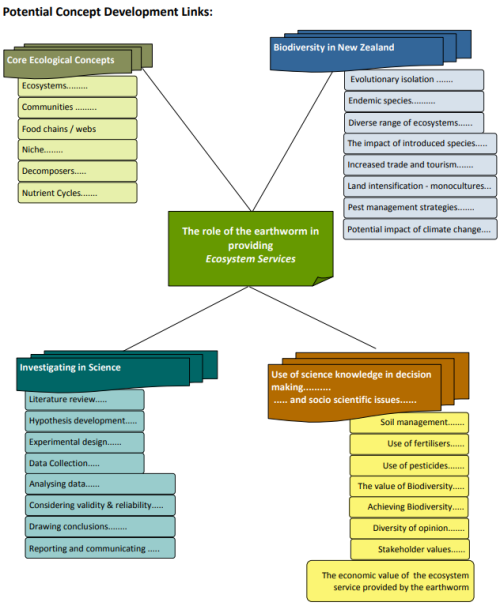LENScience
Teacher Resource Notes and Links to Curriculum
This page contains information for teachers and technicians on how these learning resources connect to the New Zealand curriculum.
Links to Curriculum and Assessment of Learning
Level 7 & 8 |
Level 8 |
|
Nature of Science |
Understanding About Science: Understand that scientists have an obligation to connect their new ideas to current and historical scientific knowledge and to present their findings for peer review and debate
Investigating in Science: Develop and carry out investigations that extend their science knowledge, including developing their understanding of the relationship between investigations and scientific theories and models
Communicating in Science: Use accepted science knowledge, vocabulary, symbols and conventions when evaluating accounts of the natural world and consider the wider implications of the methods of communication and/or representation employed
Participating and Contributing: Use relevant information to develop a coherent understanding of socio-scientific issues that concern them, to identify possible responses at both personal and societal levels |
|
Living World |
Explore the diverse ways in which animals and plants carry out the life process
Explore ecological distribution patterns and explain possible causes for these patterns |
Understand the relationship between organisms and their environment |
Teacher Notes
This learning resource is intended for use with students in Years 12 -13 but could easily be adapted for use with students in Years 7-10. For senior students, the resource is designed for use in conjunction with the LENScience Senior Biology Resource titled "Harnessing Biodiversity".

Practical Notes
Group Collaboration
Group collaboration is recommended to enable multiple replicates to be collected at each site. This models good practice, provides a point of discussion with respect to data reliability and assists students to see the value of replicates for their own investigation planning.
Site Selection
Key to enabling good discussion to come out of the activity is diversity in the site selection. It will be almost impossible to control for all variables, however this in itself will provide good discussion points for students and assist them to explore validity and reliability of data.
Examples of sites with diversity could include:
- Managed grass field (e.g. school fields) vs residential lawn in a neighbouring property or lawn within the school grounds that does not have the same level of intervention as the playing fields
- School field interior vs school field fence line
- Regularly fertilised vegetable garden vs un-managed flower bed or similar
Control of Sample Size
The control of sample size is going to be dependent on how each group go about cutting their soil sample. For this reason it is important that the class discuss the method before they split into groups to collect the data.
Calculations
It is suggested that calculations are all made to two significant figures. Checking that students all understand significant figures is important. This will provide good opportunity to discuss why we are suggesting calculations are done in this way. This discussion should be linked to issues of accuracy in the method.
Potential Extension
Design a controlled experiment to investigate the effect of a named soil management practice (e.g. addition of fertiliser to the school field / use of weed killer on the school field) on the earthworm population at a specific location. Students should be encouraged to consider control of a range of abiotic and biotic factors which will assist them to understand the complexity of the control of an investigation such as this.




